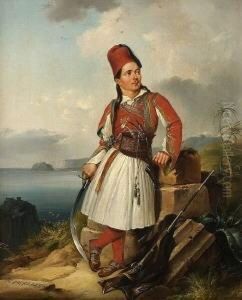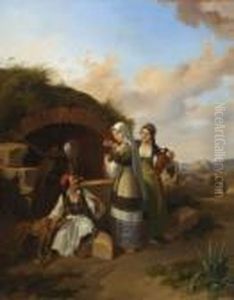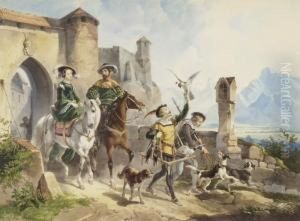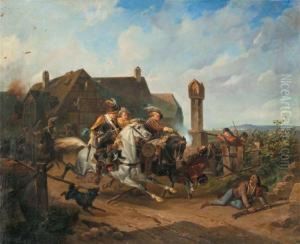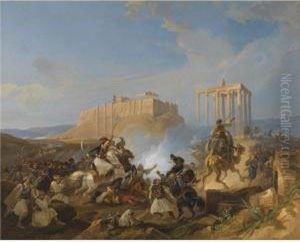Christian Johann G. Perlberg Paintings
Christian Johann Georg Perlberg was a German landscape painter and watercolorist, born on September 15, 1806, in Frankfurt am Main, Germany. His artistic career spanned much of the 19th century, a period marked by significant transformations in art, including the rise of Romanticism and later, Realism. Perlberg is particularly recognized for his detailed and atmospheric representations of landscapes and cityscapes, often with a focus on the interplay of light and shadow.
Perlberg was initially trained by his father, who was also a painter. He later continued his studies at the Städelsches Kunstinstitut in Frankfurt. Throughout his life, Perlberg was an avid traveler, which greatly influenced his work. He journeyed across Europe, visiting countries such as Italy, where he was inspired by its history, architecture, and natural beauty. His travels are reflected in his diverse body of work, which includes scenes from Italian, German, and Middle Eastern landscapes.
In 1835, Perlberg settled in Munich, which was a flourishing center for artists at the time. Here, he became part of the city's vibrant art scene and honed his skills in landscape painting. He was particularly adept at capturing the varied moods of nature and the nuances of different times of day, from the soft light of dawn to the warm hues of sunset.
Perlberg's work was well received during his lifetime, and he exhibited at various art shows, including those held by the Munich Art Association. His paintings were collected by art lovers and patrons, and he gained a reputation for his remarkable ability to render lifelike scenes with a sense of poetic tranquility.
Despite the popularity of his work, Perlberg did not have a significant influence on the development of art movements that followed. His style remained largely traditional and was rooted in the techniques and aesthetics of the early 19th century. Nevertheless, his paintings continue to be appreciated for their beauty and craftsmanship.
Christian Johann Georg Perlberg passed away on February 12, 1884, in Munich, leaving behind a legacy of evocative landscape paintings that capture the spirit of the places he visited. His works can be found in various collections and museums, serving as a testament to his skill as a landscape artist and his dedication to capturing the essence of the natural and built environments.
